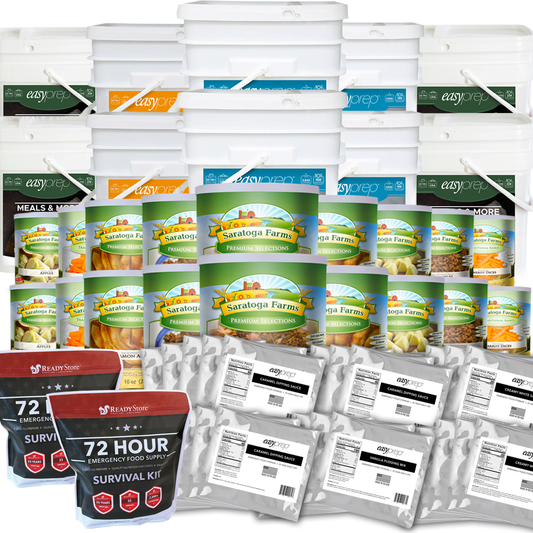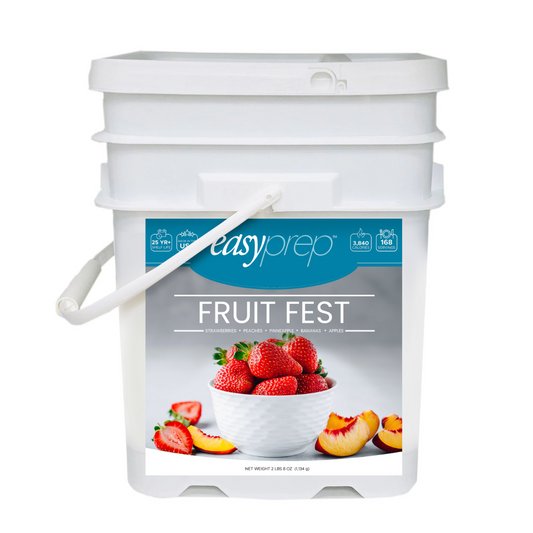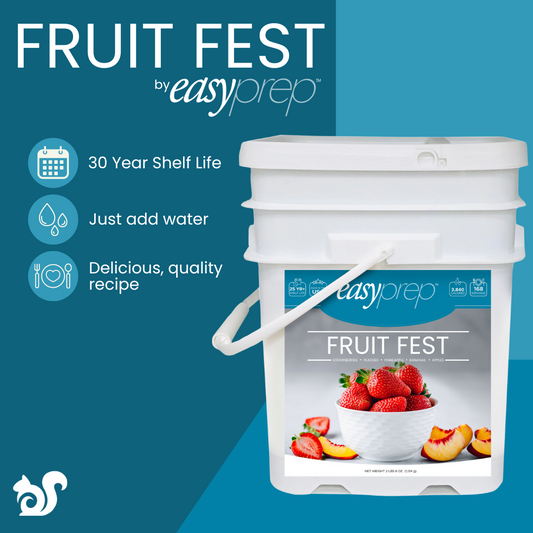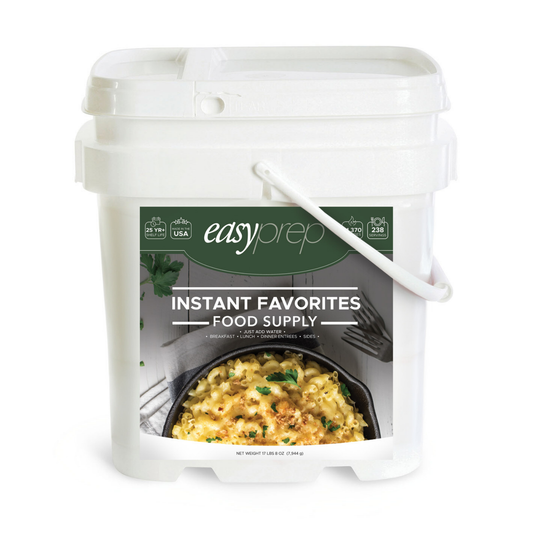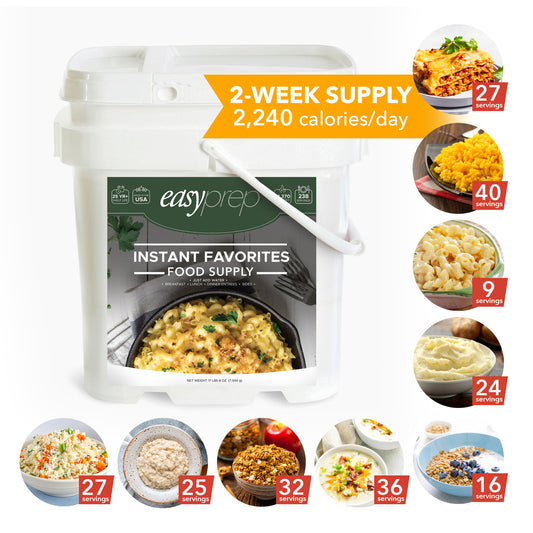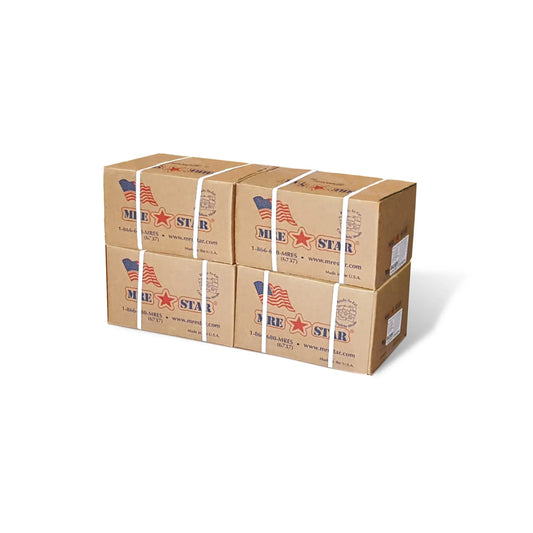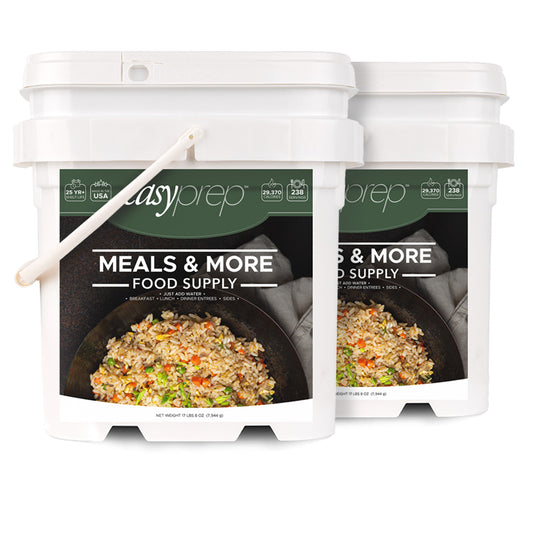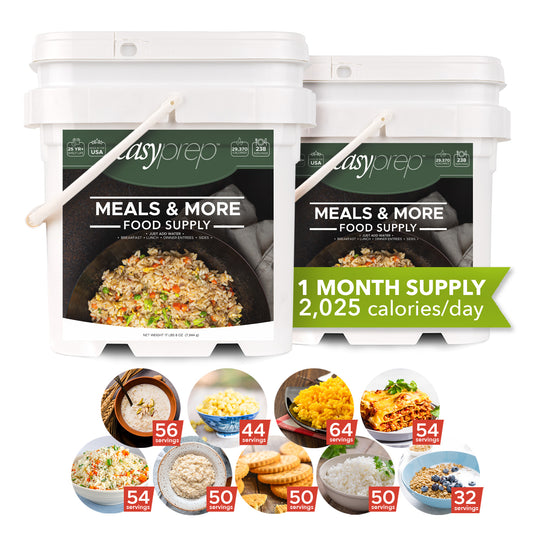Freeze-Dried Food vs Dehydrated
A lot of people use the terms dehydrated and freeze-dried like they are the same thing. However, there are some major differences between dehydrated and freeze-dried food storage. Don’t worry, we’re going to help you understand those differences.
The Dehydration Process
With any type of food preservation, moisture needs to be removed from the food. The most common way to do this is by dehydrating. Dehydrating has been a food preservation practice for thousands of years, dating back to at least 12,000 BC.[1] The Romans and Middle Easterners would dry fruits and vegetables in “still houses” which would use a fire to dry out and smoke foods. Modern-day dehydration isn’t that complex. Machines circulate hot and dry air across the food. This removes much of the water. The moist air is then dried so that water continues to be removed. The temperatures are high enough to remove water but not high enough to cook the food. Dehydrated food is usually withered and harder.
The Freeze-Drying Process
The freeze-drying process is a relatively modern preservation process. Freeze-drying isn’t something you can do at home without high-tech machinery. *Update- Freeze-drying can now be done at home with the Harvest Right Freeze-Dryer. Some reports show that freeze-drying originated with the Inca Empire.[2] However, reliable sources of freeze-drying were created during World War II as a way to preserve blood plasma, medicine and later, food for the troops. Freeze Drying is a fairly simple process too. The food is placed on large racks inside of a vacuum chamber. The temperature is lowered to below freezing and then slowly raised. The water in the food moves from a solid state to a gaseous state - maintaining the structure of the food and keeping the nutritional value.
The Main Differences
Moisture Content. The main objective with food preservation is to remove the moisture so that the food doesn’t decompose, grow mold, etc. Dehydration removes about 90-95 percent of the moisture content[3] while freeze drying removes about 98-99 percent.[4] Foods that you dehydrate at your home will typically have a 10 percent moisture content level while foods that are dehydrated professionally will have a lower moisture content - which increases the shelf life.
Shelf Life. The moisture removal has a direct impact on the shelf life. Most dehydrated products like dried fruits, vegetables, powders, and TVP; have a shelf life of about 15-20 years. However, dehydrated items like honey, salt, sugar, hard wheat, and oats have a 30-year shelf life - sometimes longer.[5] Freeze-dried foods will have a longer average shelf life. Freeze-dried fruits, vegetables, just-add-water meals and real meats will have a 25-30-year shelf life.[6] Ideally, all of your food storage would be stored at a temperature of 60 degrees or lower.
Nutritional Content. According to research by the American Institute for Cancer Research[7], freeze-dried foods retain the vast majority of the vitamins and minerals found in the original food. However, when compared to fresh fruits and vegetables, freeze-dried foods did lack in some vitamins - like Vitamin C - which breaks down very rapidly. Dehydration doesn’t change the fiber or iron content of food. However, dehydration can break down vitamins and minerals during the preservation process and retain less of their nutritional value when compared to freeze-dried food. Dehydration tends to result in the loss of Vitamins A and C, thiamine, riboflavin and niacin.[8]
Appearance & Composition. One of the main differences between dehydrated and freeze-dried food is how they look. Most people are familiar with banana chips (dehydrated) but not necessarily freeze-dried bananas (which become soft when you place them in your mouth). Weight is another difference. Freeze-dried foods are going to weigh a lot less than dehydrated foods. This makes them easier to haul or store. 
Cooking. Dehydrated foods will require cooking. Many times, they will also require some type of seasoning. This means that you’ll need to spend time boiling the product in hot water and letting it cook. The preparation time for dehydrated products can take anywhere from 15 minutes to 4 hours depending. However, with freeze-dried foods, you just need to add water. Adding either hot water or cold water will get the job done depending on what you’re eating. Freeze-dried foods will usually be ready to eat in less than 5 minutes.
Cost. Obviously, the cost of food storage will depend on what you're buying. But usually, dehydrated foods are going to be cheaper than freeze-dried. Freeze-dried and dehydrated foods offer different benefits that might be worth the cost. However, if you're on a tight budget, dehydrated foods are definitely the way to go.
The Main Similarities
Packaging. Food storage cans are highly efficient. It’s not like the bag of potato chips that you open and half of it is air. Cans are filled as high as they can be no matter if they are dehydrated or freeze-dried. All of the cans are double-enameled and are sealed with an oxygen absorber to extend the shelf life.
Storage Requirements. There isn’t a difference in storing food that’s freeze-dried or dehydrated. The cans or buckets are all the same size.
Insurance for Your Family. Whether freeze-dried or dehydrated, the food will be insurance for you and your family against natural disasters, power outages, job losses and more. If you’re prepared, you don’t need to worry. Check out our complete listings of food storage and water storage items.


